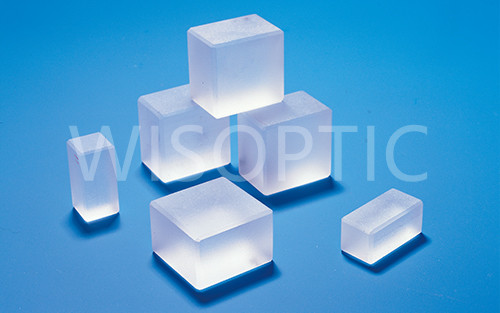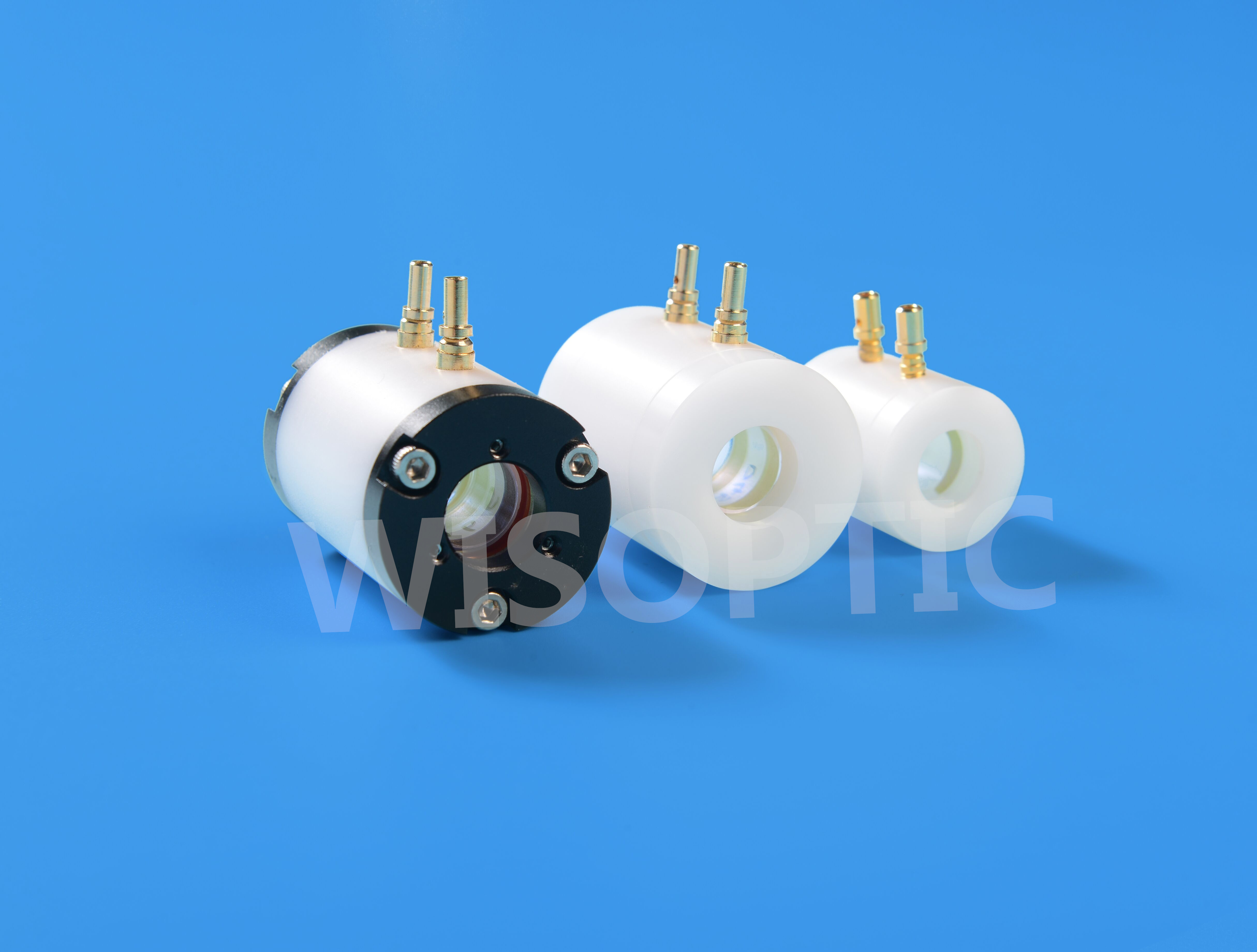Potassium dideuterium phosphate (DKDP) is a kind of nonlinear optical crystal with excellent electro-optic properties developed in 1940s. It is widely used in optical parametric oscillation, electro-optic Q-switching, electro-optic modulation and so on. DKDP crystal has two phases: monoclinic phase and tetragonal phase. The useful DKDP crystal is tetragonal phase which belongs to D2d-42m point group and ID122d -42d space group. DKDP is an isomorphic structure of potassium dihydrogen phosphate (KDP). Deuterium replaces hydrogen in KDP crystal to eliminate the influence of infrared absorption caused by hydrogen vibration. DKDP crystal with higher deuteration ratio has better electro-optical properties and better nonlinear properties.
Since 1970s, the development of laser Inertial Confinement Fusion (ICF) technology has greatly promoted the development of a series of photoelectric crystals, especially KDP and DKDP. As an electro-optical and nonlinear optical material used in ICF, the crystal is required to have high transmittance in wave bands from near-ultraviolet to near-infrared, large electro-optical coefficient and nonlinear coefficient, high damage threshold, and to be capable of being prepared in large-aperture and with high-optical quality. So far, only KDP and DKDP crystals meet these requirements.
ICF requires the size of DKDP component to reach 400~600 mm. It usually takes 1~2 years to grow DKDP crystal with such large size by the traditional method of aqueous solution cooling, so a lot of research work has been carried out to acquire rapid growth of DKDP crystals. In 1982, Bespalov et al. studied the rapid growth technology of DKDP crystal with a cross section of 40 mm×40 mm, and the growth rate reached 0.5-1.0 mm/h, which was an order of magnitude higher than the traditional method. In 1987, Bespalov et al. successfully grew high-quality DKDP crystals with size of 150 mm×150 mm×80 mm by using a similar rapid growth technique. In 1990, Chernov et al. obtained DKDP crystals with mass of 800 g by using point-seed method. The growth rate of DKDP crystals in Z-direction reached 40-50 mm/d, and those in X- and Y-directions reached 20-25 mm/d. Lawrence Livermore National Laboratory (LLNL) has conducted a lot of research on the preparation of large-size KDP crystals and DKDP crystals for the needs of the National Ignition Facility (NIF) of USA. In 2012, Chinese researchers developed a DKDP crystal with size of 510 mm×390 mm×520 mm from which a raw DKDP component of type II frequency doubling with size of 430 mm was made.
Electro-optical Q-switching applications require DKDP crystals with high deuterium content. In 1995, Zaitseva et al. grew DKDP crystals with high deuterium content and growth rate of 10-40 mm/d. In 1998, Zaitseva et al. obtained DKDP crystals with good optical quality, low dislocation density, high optical uniformity and high damage threshold by using continuous filtration method. In 2006, the photobath method for the cultivation of high deuterium DKDP crystal was patented. In 2015, DKDP crystals with deuteration ratio of 98% and size of 100 mm×105 mm×96 mm were successfully grown by point-seed method in Shandong University of China. This crystal has no visible macro defect, and its refractive index asymmetry is less than 0.441 ppm. In 2015, the fast growth technology of DKDP crystal with deuteration ratio of 90% was used for the first time in China to prepare Q-switching material, proving that the fast growth technology can be applied to prepare 430 mm diameter DKDP electro-optical Q-switching component required by ICF.
DKDP crystal developed by WISOPTIC (Deuteration > 99%)
DKDP crystals exposed to the atmosphere for a long time will have surface delirium and nebulization, which will lead to significant reduction in the optical quality and loss of conversion efficiency. Therefore, it is necessary to seal the crystal when preparing the electro-optic Q-switch. In order to reduce the light reflection on the sealing windows of the Q-switch and on the multiple surfaces of the crystal, refractive index matching liquid is often injected into the space between the crystal and the windows. Even without anti-reflective coating, the transmittance can be increased from 92% to 96%-97% (wavelength 1064 nm) by using refractive index matching solution. In addition, protective film is also used as a moisture-proof measure. Xiong et al. prepared SiO2 colloidal film with functions of moisture-proof and anti-reflection. The transmittance reached 99.7% (wavelength 794 nm), and the laser damage threshold reached 16.9 J/cm2 (wavelength 1053 nm, pulse width 1 ns). Wang Xiaodong et al. prepared a protective film by using polysiloxane glass resin. The laser damage threshold reached 28 J/cm2 (wavelength 1064 nm, pulse width 3 ns), and the optical properties remained fairly stable in the environment with relative humidity higher than 90% for 3 months.
Different from LN crystal, in order to overcome the influence of natural birefringence, DKDP crystal mostly adopts longitudinal modulation. When the ring electrode is used, the length of the crystal in the beam direction must be greater than the crystal’s diameter, so as to obtain uniform electric field, which therefore increases the light absorption in the crystal and the thermal effect will lead to depolarization at high average power.
Under the demand of ICF, the preparation, processing and application technology of DKDP crystal have been developed rapidly, which makes the DKDP electro-optic Q-switches to be widely used in laser therapy, laser aesthetic, laser engraving, laser marking, scientific research and other fields of laser application. However, deliquescence, high insertion loss and incapable to work in low temperature are still the bottlenecks that restrict the wide application of DKDP crystals.
DKDP Pockels cell made by WISOPTIC
Post time: Oct-03-2021


